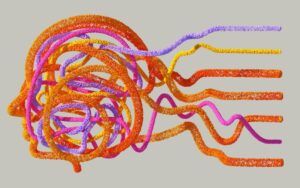
Art Clomera,
Vice President, Operations
Every organization has to manage risk in one form or another. Suppliers manage the risk of having too much or too little product in stock, legal risks are present in virtually every contract negotiation, and of course, insurance companies are built entirely on the principle of managing risk for their customers. One risk that is becoming increasingly important to manage in the modern era, especially within federal agencies, is the security of information. To mitigate this concern, the National Institute of Standard and Technology (NIST) developed a guideline known as the Risk Management Framework (RMF). In this article we’ll walk through the principles of the RMF, and how you can leverage this knowledge to protect your organization.
What is the risk management framework (RMF)?
The Risk Management Framework (RMF) is a system initially developed by the National Institute of Standard and Technology (NIST) for the United States Federal Government to provide guidance in the protection of information systems. When implemented correctly, this framework mitigates concerns related to IT systems to help protect the organization and its assets. The RMF is built on five primary components and has a seven-step process for implementation.
The 5 risk management framework components
The RMF is comprised of five framework components. These components can be thought of as the “pillars” of the RMF, which summarize the methodology to creating the framework. These components guide the process of implementing the RMF, which is covered later in the seven-step process.
1. Identification
Identification is the first component of the RMF, which refers to the process of recognizing and documenting potential risks. In this stage, all potential risks (regardless of the probability or severity) should be listed for further investigation. As an organization or system grows and changes, so may the potential risks. Therefore, it is also important to identify not only present risks but potential future risks as well.
2. Measurement and assessment
The measurement and assessment component builds on the list of risks identified earlier in the process. In this component, risks are analyzed based on metrics such as probability and severity. The results of this analysis are then used to rank the risks to determine where the efforts of the ensuing components should focus.
3. Mitigation
The next component in the RMF reviews the ranked list of risks generated from the first two components to identify potential mitigation strategies for each risk. These strategies will be designed to eliminate or lessen the impact of the identified risk. The highest-ranked risks will require the implementation of strong mitigation tactics; however, an organization may opt to leave lower-ranked risks unmitigated if the potential solutions are costly or difficult to implement. The collection of mitigation tactics from this component are often organized into a response plan, which can be implemented organization-wide.
4. Reporting and monitoring
The mitigation strategies implemented in the prior component are chosen with the best information available at the time. Strategies don’t always go according to plan, and risks can evolve over time. As such, risks must be monitored to ensure that the response plan remains adequate, and new risks are identified as they arise. In the information security domain, reporting identified risks not only internally within your organization but also externally to peers is considered best practice, and helps to create a stronger community of information security.
5. Governance
Governance is the final component in the RMF and encompasses the processes put in place to ensure the RMF remains compliant and up-to-date. Governance can include the definition of RMF-related roles, authority assignment, the appointment of committees, risk reports, regularly scheduled meetings, and more. By putting formal processes and roles in place, the governance component ensures that the RMF is not only successfully implemented, but also remains well maintained.
Manage Information Security with the 7 RMF Steps
There are seven steps to successfully execute the RMF for an organization. By following these steps, an organization can perform the RMF in such a way that all five components of the framework are considered. Each step is critical to successful execute the RMF and should be followed carefully. Depending on the RMF guide you follow, you may also see the RMF steps referred to as a 6-step system, with “Prepare” being counted as “step 0”.
1. Prepare
The prepare step lays the groundwork for the RMF by carrying out essential activities across the organization to enable the implementation of the RMF. Organizational tasks in this step would include activities such as assigning key risk management roles, strategy, and organization; identifying common risk controls available for inheritance; and developing a strategy for continuous risk monitoring. System tasks in this step would include mission / business focus; stakeholders and assets; authorization boundary; information types and lifecycle; security and privacy requirement definition and allocation; system registration and risk assessment; and enterprise architecture. Upon completion of the preparation step, the risk management team will have been identified, and the initial setup work for risk categorization and monitoring will be complete.
2. Categorize
Building on the risk assessment performed in the Prepare step, the categorize step analyzes the adverse impact to an organization with respect to the loss of confidentiality, integrity, and availability (CIA) . When determining the severity of the risk, it is important to consider not only the potential impact to the organization, but also individuals, other organizations, and potentially even national interests depending on the information utilized in the affected systems. By the end of the categorize step, characteristics of the affected systems along with categorization of the potential CIA risks will be completed and reviewed by the risk management team.
3. Select
The select step in the RMF process brings together the common risks controls identified in the Pprepare step and the categorized system risks generated in the Ccategorize step. The purpose of the select step is to choose and customize the controls required to mitigate potential risks to the information systems. While common controls can be utilized for many risks, some level of customization will likely be required to ensure system-specific risks are mitigated. This step also includes the documentation of the selected controls for the development of a continuous monitoring program.
4. Implement
The previous three steps in this process have all been critical in planning the RMF strategy, but no actions have been specifically employed. In the implement step, the selected controls specific to the security and privacy plans for the organization’s systems will be put in place. As the controls are implemented, specific details of the control strategy will likely need to be refined and documented. Proper documentation of how the control strategies have been implemented is crucial, as this information will be utilized in subsequent steps.
5. Assess
Once the controls for mitigating risks have been put in place, the next step is assessing the controls to ensure they are operating as intended and producing the desired results. To assess the controls, an assessment team must first be selected. This team will then plan their assessment strategy, and perform assessments of the controls implemented in earlier steps. The result of this step will be an assessment report which summarizes the assessment findings and provides recommendations for potential control strategy remediation actions.
6. Authorize
The authorize step is meant to provide accountability for the organization by appointing a representative to oversee the potential risks and mitigating controls to determine if the appropriate actions have been implemented. The authorized representative will be accountable for the reporting and overall communication of the implemented controls, accepted risks, and failed controls to the organization. This representative will also approve or deny the addition or modification of controls as required.
7. Monitor
With the RMF in place, the last step is to monitor the security and privacy of the information system on an ongoing basis. This step encompasses tasks from previous steps to evaluate the need to change or adjust any portion of the RMF. The monitor step will include the identification of new risks arising from system or environment changes, providing assessments of the control strategy effectiveness, and interacting with the authorized representative to adjust or add controls as needed.
The primary benefits of RMF (with examples)
When an RMF is working properly, it can seem like it’s not doing anything at all, and therefore it may be difficult to understand its value. The value of a successfully implemented RMF can best be described by the impacts of the potential risks that it keeps at bay. Often the RMF will pay for itself many times over by preventing high impact consequences, such as data loss or information leaks. For example, according to a study conducted by IBM and the Ponemon Institute in 2022, the average cost of a single “data breach” globally was US$4.24 million1.
Despite the potential benefits, efficiently and effectively executing the RMF can be a significant undertaking. To help organizations more easily work through the RMF process, third-party RMF consultants and pre-defined systems are available. Pre-defined systems and components will have Security Technical Implementation Guides (STIGs) that can be utilized to significantly expedite the implementation process.
Automate RMF with IPKeys
As this post explains, though RMF is critically important to organizational security, successfully tailoring and executing the RMF can be a difficult and time-consuming process. IPKeys has the experience and expertise to protect your federal agency quickly and completely. In addition to providing your organization with the peace of mind of modern security systems, the IPKeys data-driven RMF approach also includes unique features and benefits to enhance your security and communications. Contact our team today to learn more.



